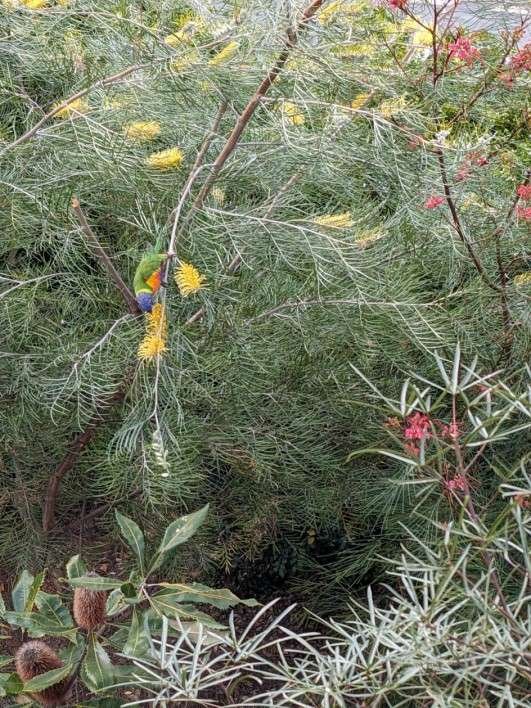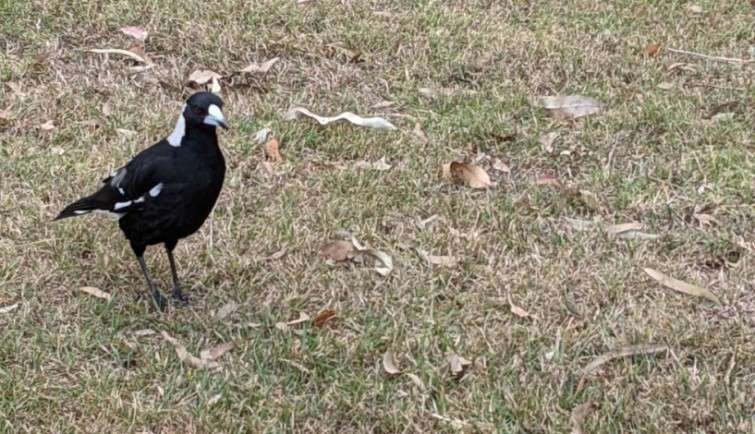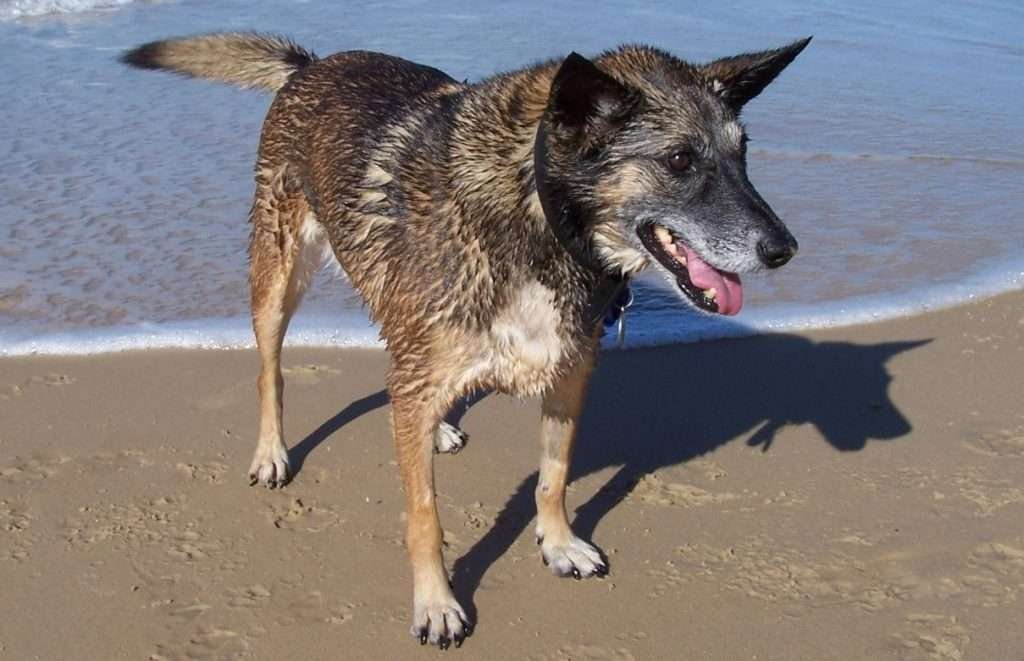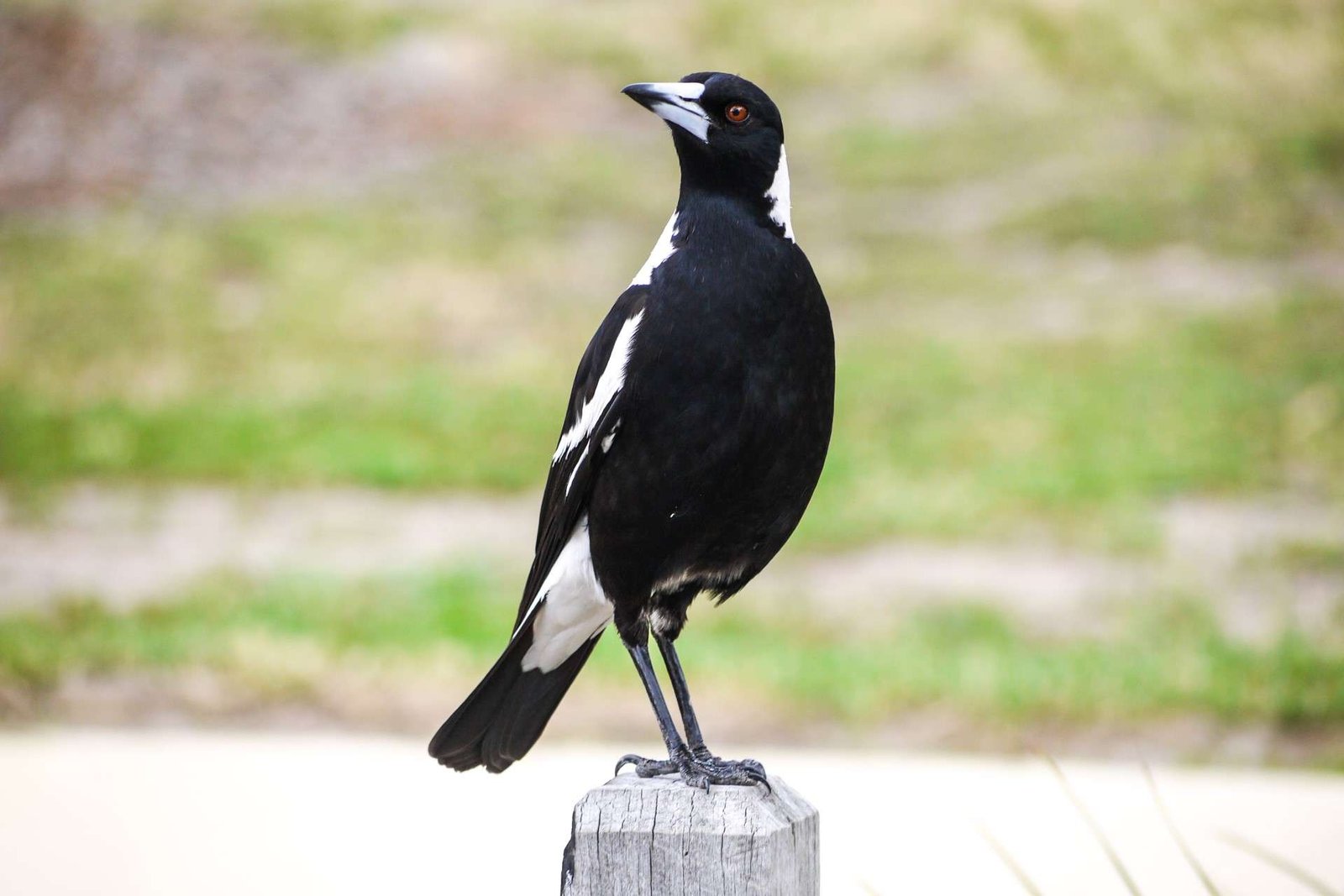In Australia, spring did sprung. Ah, spring has spranged. Spring has springed?
In Australia, it is now spring…and in Brisbane that means new growth and flowers, endless blue skies and warm days (we’ve already hit 30 degrees and had storms rolling through), the return of flies and mozzies, cooking barbies and picnicking in the park, and birdlife – everywhere I look.
For the birds, spring is their nesting season. And for one species, notorious at this time of year, it means it’s also swooping season.
Birdbrains or simply misunderstood?
I love sitting on my deck watching the birdlife. Rosellas, blue-faced honeyeaters, and pesky noisy miners all compete (and it can get willing, especially when the noisy miners show up!) for nectar from the Grevilleas that grow in my garden.

Crows, Kookaburras, Cockatoos, Currawongs, the occasional brushturkey, and my favourite of all the birdlife we’re lucky to enjoy in abundance, the ubiquitous Australian magpie, all stop by to take a look, bathe in the bird bath, gather sticks and twigs, regurgitate a berry-looking concoction and leave it in tiny piles on our deck, repeatedly, like some kind of pagan offering (thanks Currawongs!), or snack on worms and insects in the yard.
The curious way magpies look up at me every time I go for a walk makes my heart melt. Their birdsong is so beautiful and complex, I could listen to it on a loop for hours.
And yet, the mere mention of the word ‘magpie’ can send some people into fits of rage and cause others to roll about on the floor.
It’s their reputation for swooping unsuspecting passersby during the breeding season (August to October in Oz) that terrifies some.
Local news services fuel this distrust. Each year, they trot out the same stories about “swooping season” and show footage of some poor sod comically (to me anyway) running down the street waving their arms about as a magpie incessantly squawks above their head.
In the large park alongside the river at the end of my street, signs appear to “warn” people about magpie “attacks”.
The truth, however, is that only around 10 per cent of male magpies swoop people and other animals, and only then to protect their young and any unhatched eggs from someone, or something, they perceive to be a threat.
Despite my walking through the park by the river most days for the past eight years, the magpies have never done anything more confronting than sing to me.
In fact, I haven’t had a single magpie, either in Brisbane or Sydney (where I lived for a few years in my twenties), flap its wings in anger at me since I was a kid.
I haven’t seen anyone else swooped along my almost-daily walking route either. Probably because magpies aren’t dummies, and they don’t usually attack unless provoked.
Magpies can live for up to 30 years, are extremely territorial, and can remember human faces for up to five years. So, if you’re out walking, and don’t shout and wave your arms about, they usually leave you alone.
But I go one step further. I take the time to actually talk to the local magpies when I see them.
And so regularly do I go walking, and so plentiful are the groups of magpies that I see, that I’ll come across the same birds in almost the same places every time I’m out.
I’ll say g’day as I’m passing by and make clicking noises with my tongue that I consider my way of calling to them. And they’ll study me, or stop and turn, or even scamper over in some cases to get a better look.
I’m convinced they know who I am now – that guy with the blue cap that looks like an old rag, or the brown bucket hat that looks like a mushroom gave birth to an old rag – that they consider me ‘friendly’, and that that’s the reason they’ve never “attacked” me.

The local noisy miner population, however, gangsters of the bird world that they are, have swooped me – as recently as Monday. And I’ve seen them have a go at other birds, other people, and even confused dogs on my travels as well.
But their yellow-beaked faces aren’t plastered all over the evening news, are they? Even though, in my view at least, they’re a far greater scourge in so many ways, than the magpies I’ve grown to know and love.
Do Autistic people have a unique connection to animals?
The time of year, the bad publicity magpies receive, and my own love of birds and most things animal, got me to considering something I’d heard (and probably also read) about the relationship between Autistic people and animals.
Temple Grandin, an American academic, animal behaviourist, and Autism rights activist who herself is Autistic, said in her paper ‘Thinking the Way Animals Do’ that: “As a person with autism, it is easy for me to understand how animals think because my thinking processes are like an animal’s.”
She writes of a horse trainer who once told her, “Animals don’t think, they just make associations.” To which she replied, “If making associations is not thinking, then I would have to conclude that I do not think.”
Temple Grandin is referring here to the idea that both animals and Autistic people think by making visual associations, like photographic snapshots in one’s mind, as opposed to being language-based thinkers.
This concept rings very true for me. I was always drawing (poorly) when I was younger and, frustrated by my artistic inadequacies, turned to tracing what I could not draw, and then, ultimately, to writing.
However, even as a writer, it’s always the pictures that come first – followed by the broader concepts that I then apply to those earlier images.
In fact, most of my writing starts from a single image I have in mind, from which springs everything else. This is especially so when I write creatively: A split-level house surrounded by trees, a man and his Christmas shopping trapped beneath a shelter on a train platform in the pouring rain, a wall that is now flush against the back of a computer monitor but was a metre further back the day before.
In addition to the view that Autistic people and animals have similar ways of thinking, there exists the idea that many Autistic people prefer the company of animals to people.
Animals are definitely a lot easier to get along with. They don’t judge you (at least I don’t think they do – except for maybe cats?), or expect you to behave a certain way, or tell you you’re not good enough.
And in a study from 2022, [‘They ask no questions and pass no criticism’: A mixed-methods study exploring pet ownership in autism], the authors found that replacing people with pets often satisfied any desire for social contact in Autistic people.
Further, the study suggests the connection many Autistic people form with animals goes some way towards blowing into a million billion tiny pieces, the concept that we’re all mind-blind or lack empathy.
From the study’s introduction:
“In essence, it (the intact human-animal bond within the Autistic population) contradicts the dehumanising narrative that Autistic people are less loving, compassionate and invested in the emotions of themselves and others due to their social differences.”
In times of trouble as a child, and then as a teenager, I found sitting with a beloved family pet, rather than with any other person, far more comforting – simply by being in its presence.
And when I found myself on my own in Sydney after a relationship had ended, I searched, not for another girlfriend, but for a dog, Elli, who would become an incomparable companion for the next 13 years (except for you of course, my love!).

When Elli passed away, almost 13 years ago now (ironic, that synchronicity), I ignored calls from some people for me to immediately replace her with another dog. I was bereft, grieving, and although I have known some people, colleagues, friends, who have rushed straight back out to fill the void, I could not think of anything worse than replacing this Autistic man’s best friend so quickly and casually.
My response, I believe, also challenges the concept that Autistic people lack the same level of empathy as non-autistics. If anything, many Autistic people suffer from far too much.
This hypothesis would better explain the frequent social isolation we experience – recoiling from the too loud, too frightening, too fast-paced world and all the people in it, rushing about and intensifying at an all-too-alarming rate.
Give me a dog or a bird or (even) a cat and their soothing, non-contradictory, straightforward behaviour any day.
That there is birdlife all around me, especially at this time of year, brings me a measure of comfort and connection I seldom, if ever, get from people, and without a single string attached.
If you have been swooped lately by a magpie, I’m very sorry to hear it. But rather than yelling at it and flinging your arms about, try to ignore it – as difficult as that might seem to do.
And the next time you’re out and see a magpie, why not do as I have done with many of the winged critters in my area and make friends with it.
Whispering sweet nothings to a bird might feel strange at first, but they will remember you.
And you might find later, perhaps even next “swooping season”, that you’re pleasantly surprised by the results.

Did you find this article helpful? Did it resonate with you or in some way make you stop and think? Writing these pieces takes time and effort, and your support can make a real difference in helping to keep this content flowing. If you enjoyed this post and would like to read more articles like this in the future, please consider donating a small amount to help me cover the costs of running this website. I’m not in this to get rich (and trust me, I won’t! 😉), but your contribution helps sustain the effort that goes into crafting fresh, Autism-friendly content. Your support is greatly appreciated. Thank you!


Thank you for this. I really enjoyed reading it and getting confirmation of my behavior vis-à-vis my dog upon his passing as well as how I relate to animals, which feel much less of a minefield than humans!